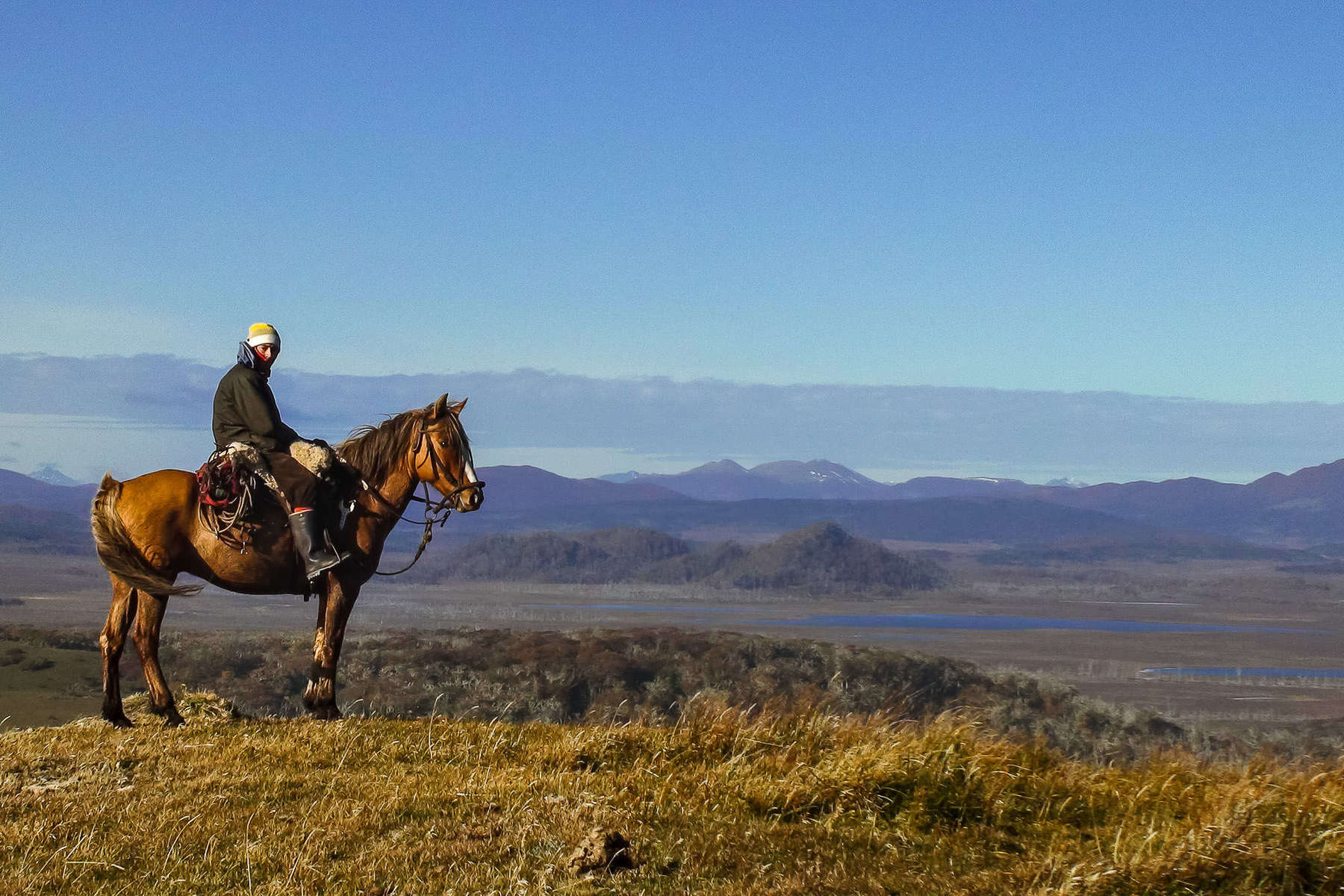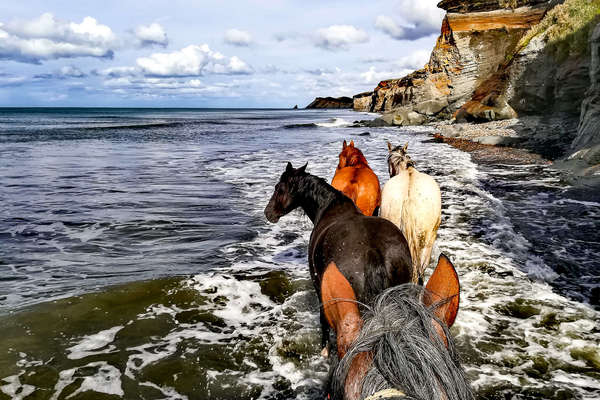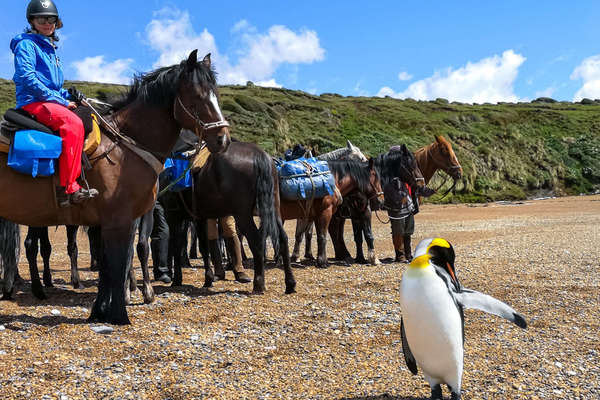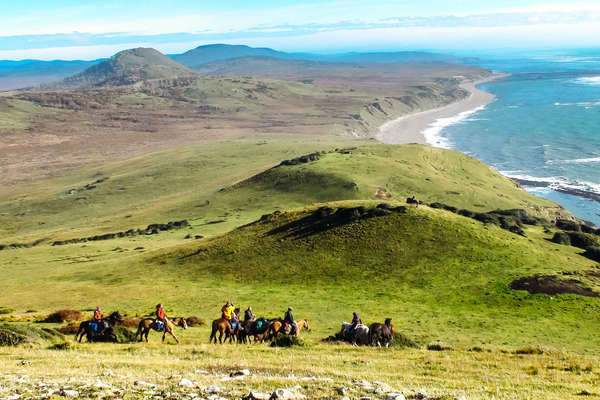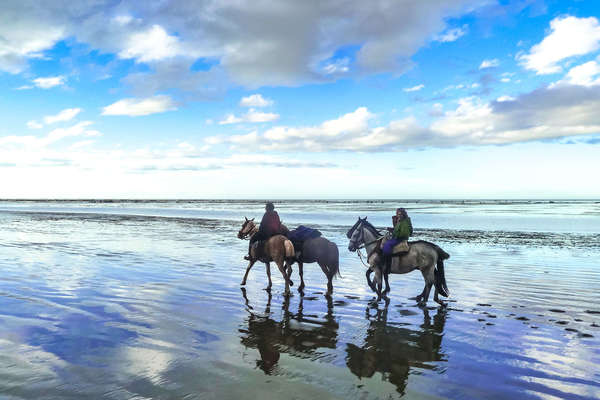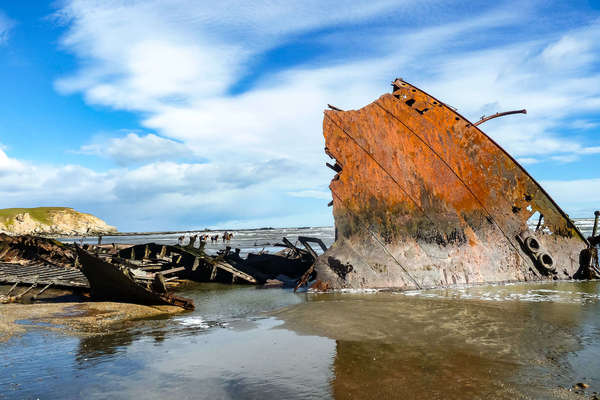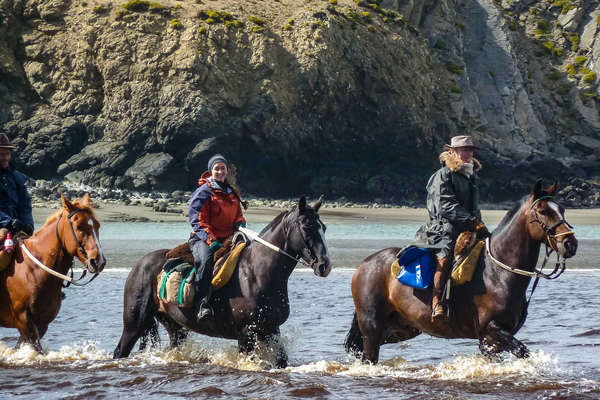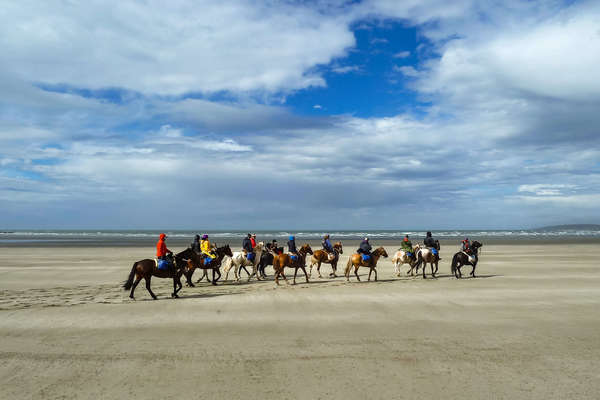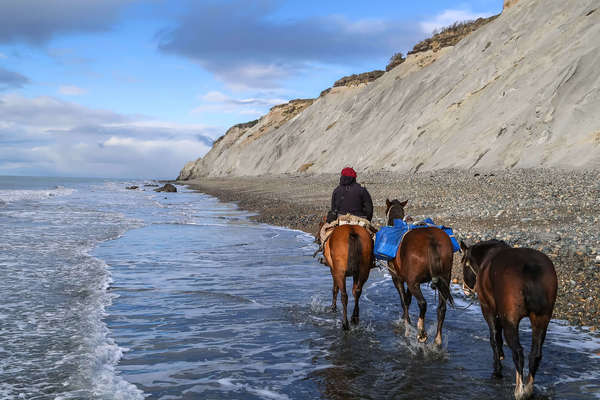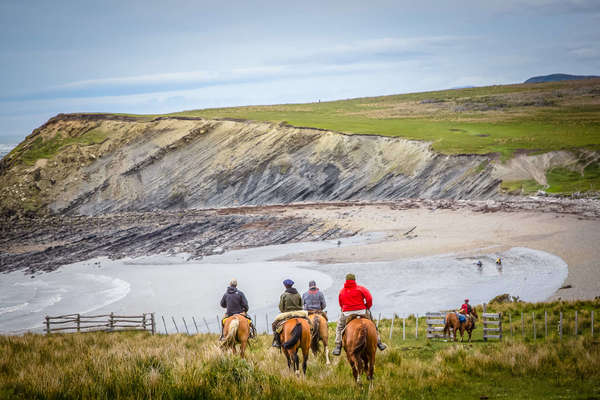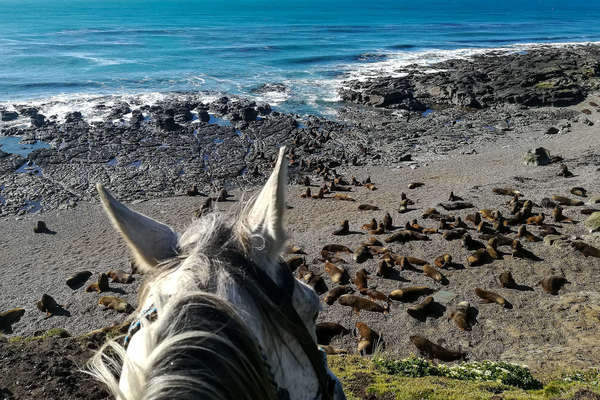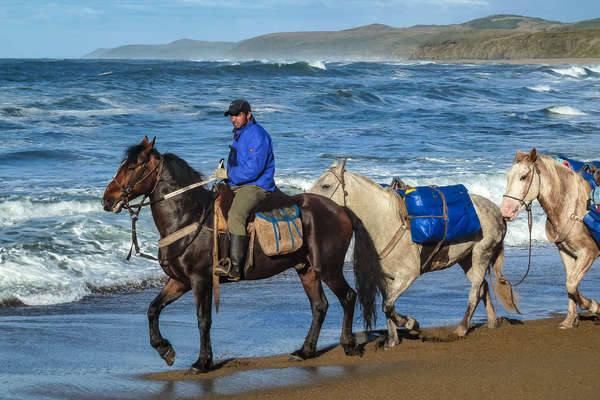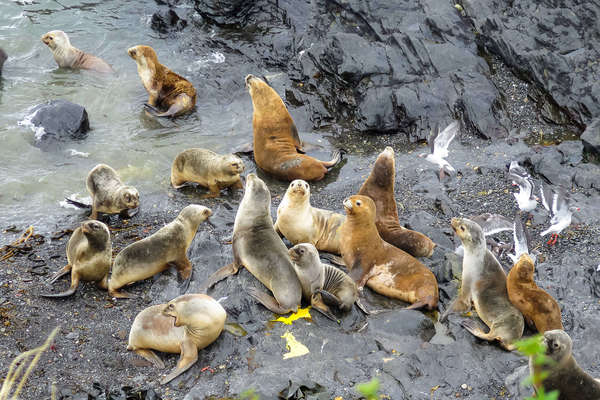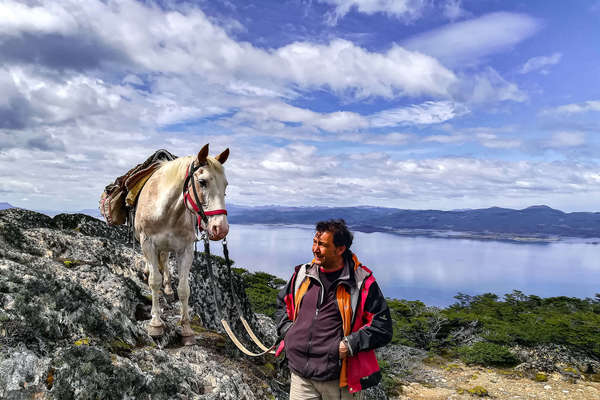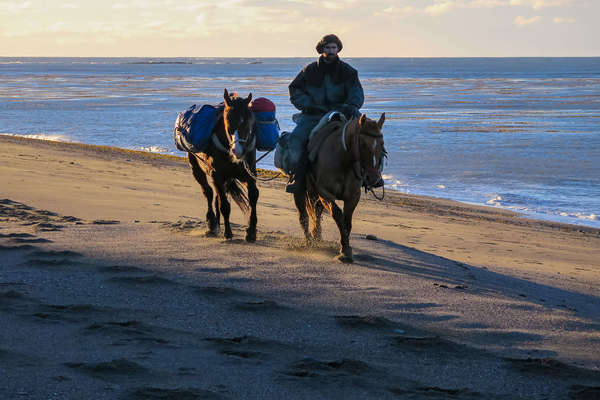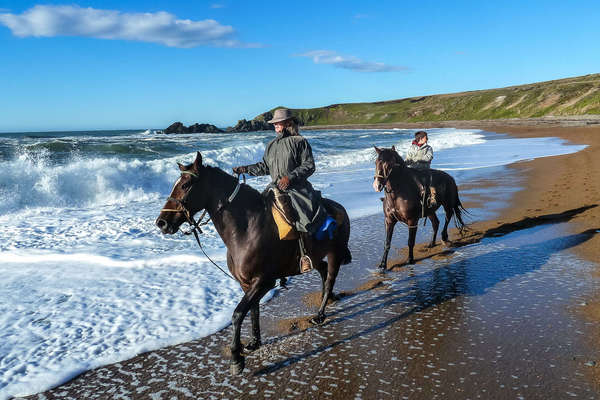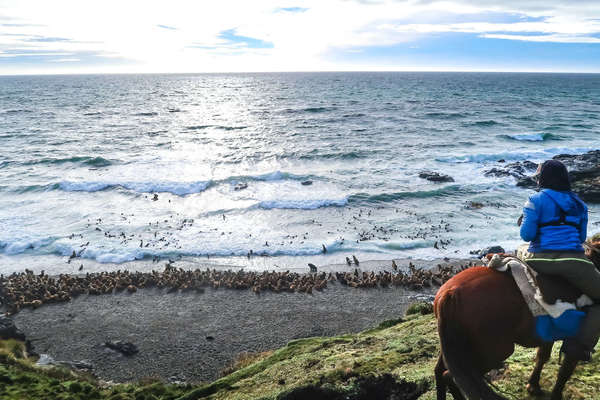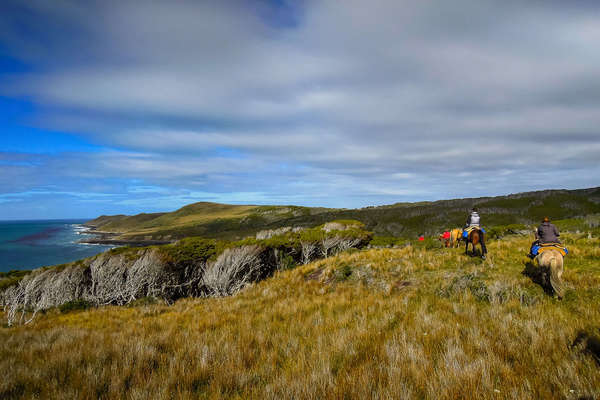Comfort
You will sleep in very basic shelter accommodation during the ride, either in bunk beds or on the floor (please note, shelters are shared between male and female). Clients are requested to bring their own sleeping bags.
Sanitary facilities vary between shelters - some have a toilet and/or a shower, but you should be prepared for camping conditions and to wash with rainwater that's been collected for you. Please note there is no electricity and no signal throughout the ride. You may bring a solar charger/powerbank, if you wish.
For nights before and after the expedition you will stay at a hostel in Ushuaia, in shared accommodation.
Meals
Meals are simple but tasty and plentiful, with many fresh and local products. For evening meals, guests can expect dishes such as empanadas, rice, vegetables, meat, fish, Milanese and pasta. Lunches are usually picnics. Local wine is provided with evening meals.
WATER
There is potable water at each shelter. You can bring water purification tablets such as Micropur for the water if you are worried.
Vegetarian diets can be accommodated – please let us know at the time of booking. Vegan, coeliac, gluten-free and other special diets are more difficult, please check with your travel advisor.
Climate
Weather conditions vary and are unpredictable. It has been said that “one can experience all four seasons in one day here in Patagonia” -- snowfall, rain, strong sun or wind.
The climate can also change in a surprisingly short period of time. Riders must be prepared for the most extreme weather conditions (waterproofs and gloves are a must!) In general, the weather is cold and windy, with average temperatures ranging from 2 to 12 °C (35-54 °F), but due to the wind cooling factor, the perceived temperature can be significantly lower.
In short, you can expect cool days and cold nights. During the austral summer, daylight hours are exceptionally long (15 – 17 hours).
Tips
Tips are welcome but not expected. You should tip what you feel the service is worth and what you feel comfortable with. We would recommend c. USD 10 per day, which can be given to your guide to share amongst the whole team.
Packing list
PACKING LIST
Warm and waterproof outdoor clothing is crucial for your comfort during the expedition. It is important for you to stay warm and dry. Layers of clothing are key, and also convenient due to changing weather conditions.
Please avoid taking too many unnecessary items as there is limited space for luggage. Each client will be provided with bags for their belongings, these include: saddle bags (maximum weight 10L + 10L) and one big bag (maximum weight 35L) – your sleeping bag should fit inside.
Head
- Riding helmet – please bring your own, helmets are not available to rent.
- A warm cap.
- Thermal neck-scarf (buff).
- Sunglasses.
Body
- Thermal underwear (tops and leggings, 2x sets). Note: Cotton is not recommended as it absorbs moisture and takes time to dry.
- Lightweight, waterproof trekking trousers.
- Waterproof and wind-proof jacket with hood.
- Lightweight warm tops/jackets (for example, a softshell fleece) .
- A jacket for camping (oilskin jacket/coat is a good idea).
- Please don’t bring plastic ponchos due to the windy conditions.
Hands and feet:
- Two pairs of riding/hiking shoes. Waterproof leather boots or trekking shoes. Please note that footwear should be comfortable for both riding and walking.
- Lightweight trainers (for the evenings).
- At least 5 pairs of socks, in case your shoes/feet get wet during river crossings.
- At least two pairs of gloves, preferably waterproof.
Nightwear and sleeping gear:
- Sleeping bag with a comfort rating of at least minus 10c.
- Thermarest pad or similar insulating mattress.
- We also suggest adding a liner, such as silk or fleece for extra warmth.
- Pyjamas.
Equipment:
- Headlamp.
- Cosmetics – including sunblock, wet-wipes and toilet paper, personal medications (including a list of any allergies).
- Nylon or waterproof bags to secure your personal items (35L maximum).
- Small thermos (0.5L – 1L) or water flask for personal use.
- Camera with spare batteries.
- Powerbank.
- Microfiber or quick drying towel.
- Eye-mask.
- Ear-plugs.
- Portable / foldable backpack (5L approx. to take when hiking).
- Paper copy of id card/passport.
- Cash.

